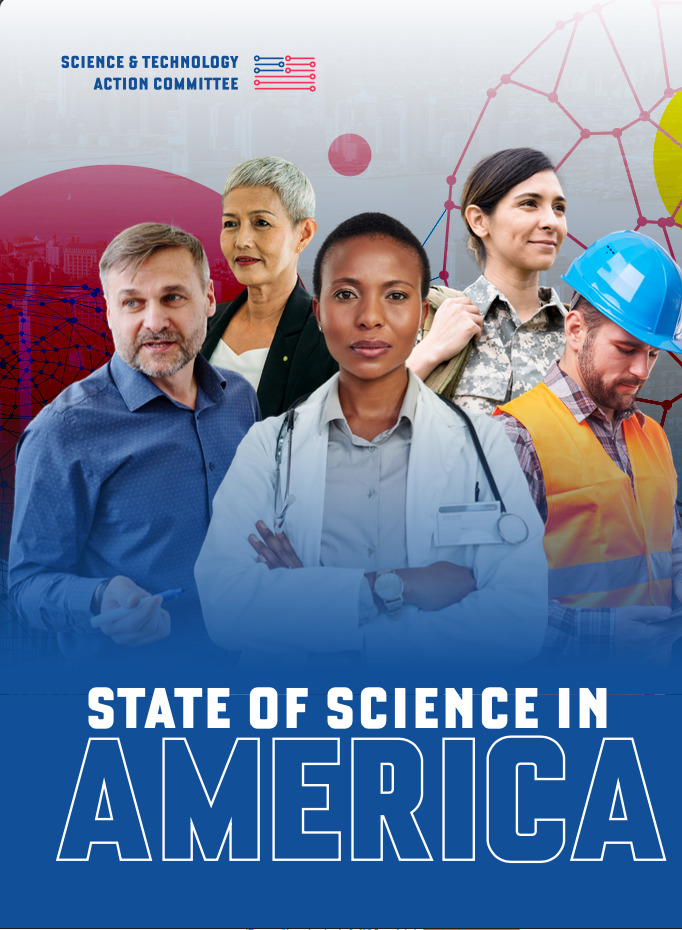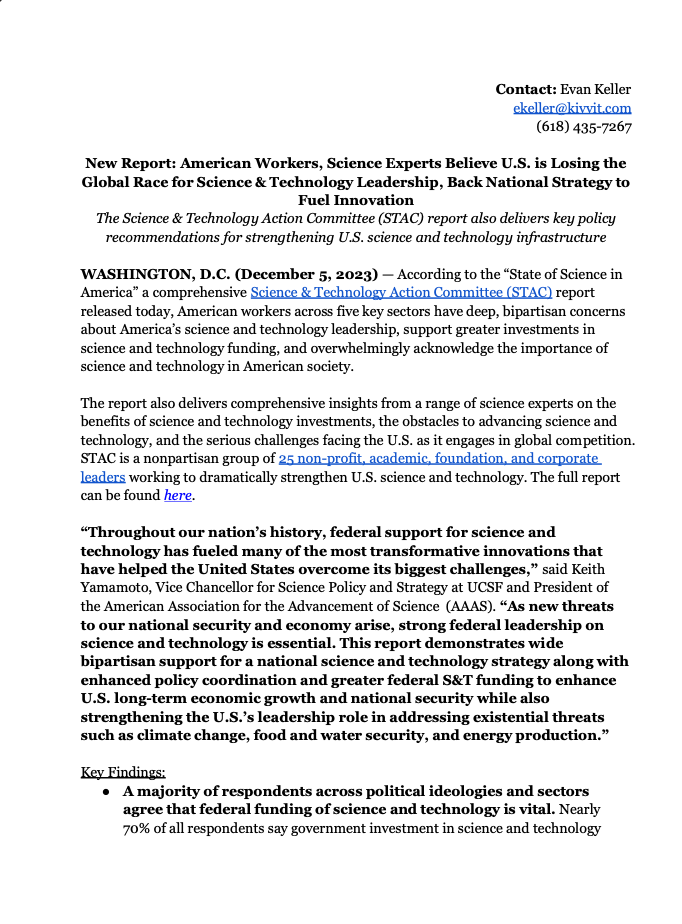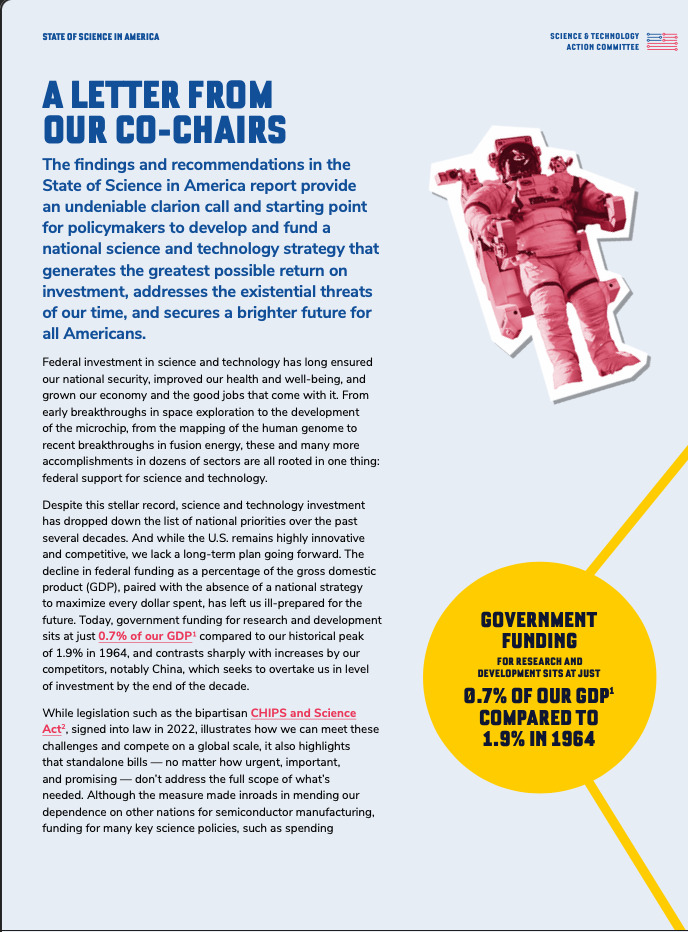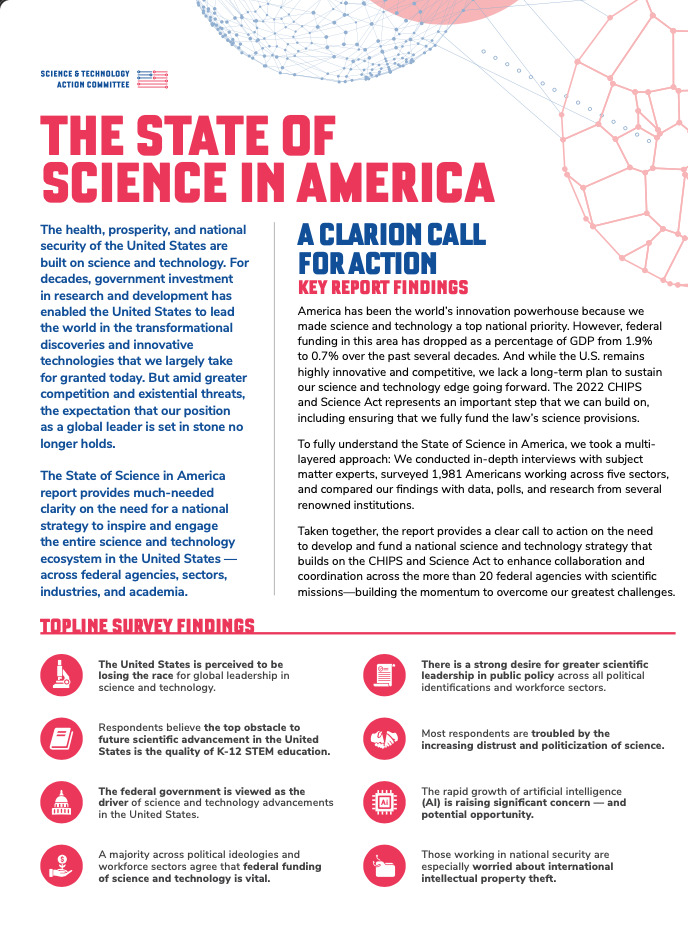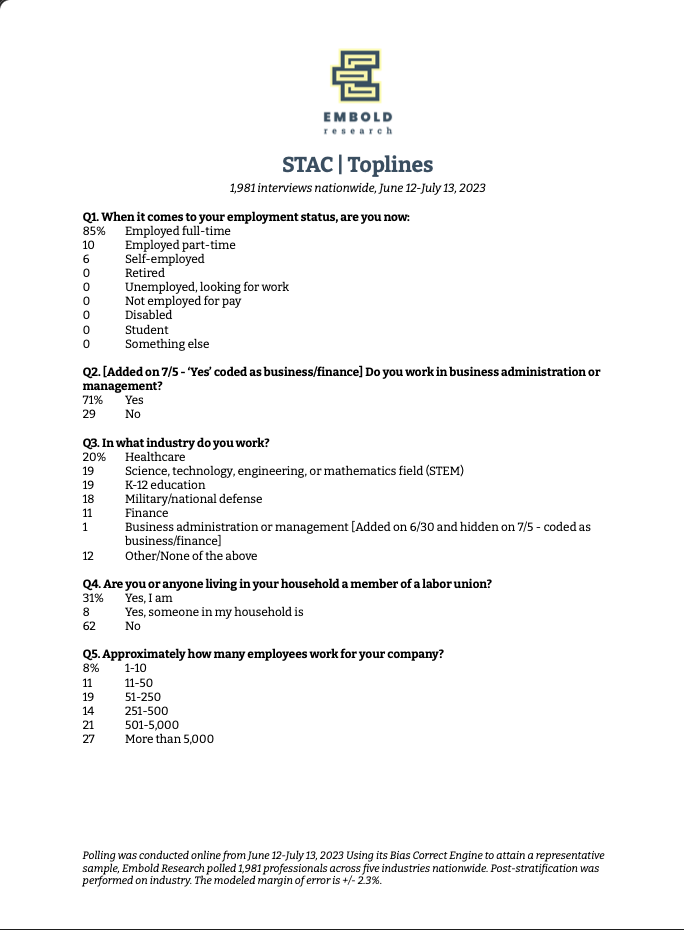2023 Report & Recommendations
The State of Science in America
Government investment in science and technology has enabled the United States to lead the world in key technological advances and innovative discoveries for decades. Today, we can no longer take our leadership position for granted. The State of Science in America report provides clarity on the need for a national science and technology strategy that leverages renewed federal investment and better government agency coordination to strengthen our nation for decades to come.
Download the Report Download the Press ReleaseHow the United States Can Regain Global Leadership in Science & Technology
By focusing on these three factors, the United States will be positioned to lead globally on the technologies critical to the future, such as artificial intelligence, clean energy, and advanced bioscience.
Key Report Findings
America has been the world’s innovation powerhouse because we made science and technology a top national priority. But federal funding in this area has dropped as a percentage of GDP over the past several decades. And while the U.S. remains highly innovative and competitive, we lack a long-term plan going forward. The eight findings below form the basis of our argument for a national science and technology strategy that increases funding and coordinates the federal government’s response to society’s most significant challenges.
Policy Recommendations
Based on survey findings and insights from the full STAC committee, the report includes six key policy recommendations, each intended to strengthen science and technology in the United States.
- Create a comprehensive, national strategy for advancing science and technology innovation in the United States.
- Foster greater coordination among the 20+ federal agencies with scientific missions.
- Increase federal funding for science and technology from 0.7% to at least 1.4% of U.S. GDP in the next five years.
- Bolster STEM education at all levels, starting with K-12.
- Ensure a diverse domestic STEM workforce while also cultivating international talent.
- Work with other nations — both allies and adversaries — on global challenges.
Letter from Committee Chairs
As Co-Chairs of the Science & Technology Action Committee, we are deeply committed to advancing discovery and innovation in the United States in the pursuit of a healthier, more prosperous, and more secure America and world. We developed the State of Science in America report to gain insight into American workers’ priorities, and gain experts’ perspectives on the consequences of the lack of a comprehensive national science and technology strategy. Our letter to policymakers details what we discovered and puts forward an urgent recommendation for a path forward.

Bill Novelli

Sudip Parikh, Ph.D.

Mary Woolley

Keith Yamamoto, Ph.D.
)
Methodology
This report features results from a survey of 1,981 Americans working in five key workforce sectors to examine their perceptions of U.S. competitiveness. It also assesses respondents’ support for the development of a national strategy and increased federal funding of science and technology.
Surveyed Americans in five Sectors
Americans working in the following five sectors were surveyed: health care, K-12 education, STEM, military/national security, and business.
Within these sectors, we also polled both union and non-union workers. In addition to being currently employed, all respondents indicated they are registered voters and provided their political affiliation.
26 EXPERTS’ INSIGHTS.
1,981 workers surveyed.
5 workforce sectors.
The Science and Technology Action Committee (STAC)’s report highlights the widespread, bipartisan view that America is falling behind in science and technology—and the steps we must take to regain our prominence.
STAC Subject Matter Experts
Twenty five leaders in science, health, business, national security, technology, and academia provided in-depth analysis and unique insights on the State of Science in America today and the steps we must take to boost our economy, increase our national security, and address the existential threats we face both nationally and globally.
Meet Our Experts
